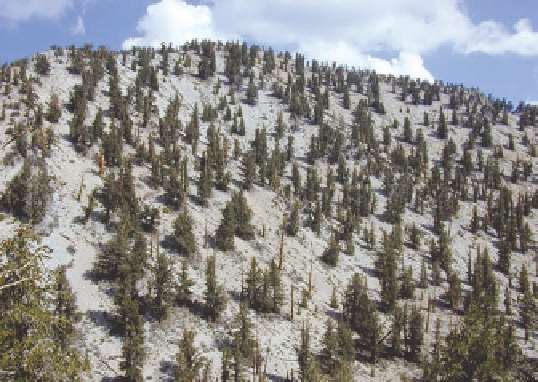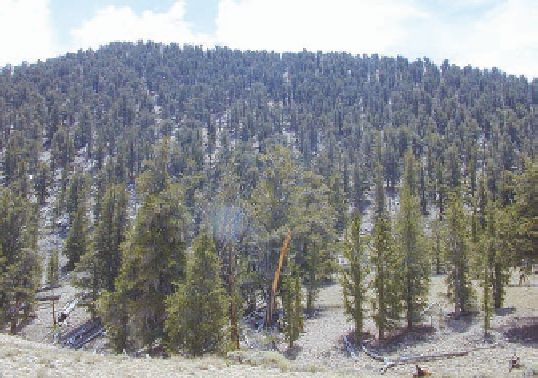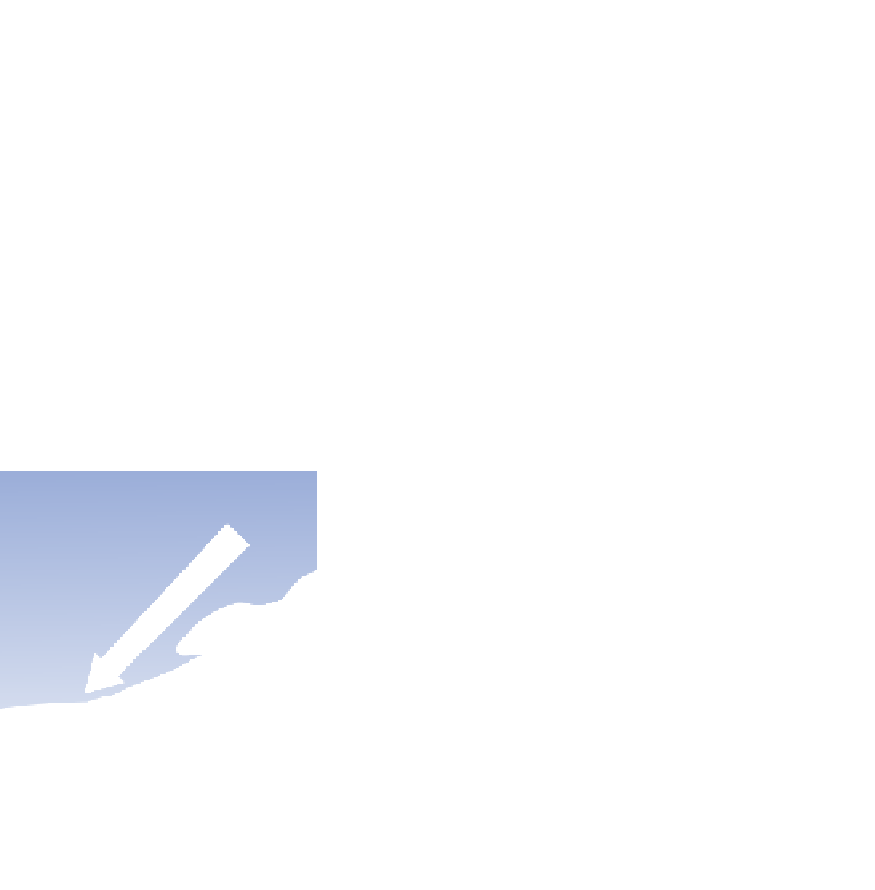Geoscience Reference
In-Depth Information
Sun's rays
Adret slope
Ubac slope
40
°
90
°
Drier microclimate,
fewer trees
Wetter microclimate,
more trees
(a)
Figure 10.19 Slope aspect and Sun angle.
Slopes that directly
face the Sun (adret slopes) have higher Sun angles and thus a
warmer and drier microclimate than opposite slopes (ubac slopes).
because it is related to how intensely the Sun strikes a given slope
(Figure 10.19). In this context, the
adret slope
is the slope that
faces the Sun most directly; that is, the slope at which solar ra-
diation arrives at a high angle. Where this geographic situation
occurs, the
microclimate
(climate over a small region) is usually
warmer, more evaporation subsequently occurs, and the slope can
be relatively dry. The opposing, or low-Sun slope, is called the
ubac slope
. This aspect is characterized by a relatively cooler
microenvironment with less evaporation because less direct solar
radiation is received. If you live in a region that receives abundant
snowfall, notice the effect of aspect on hills that slope down on the
north and south sides of highways. One slope will be free of snow
due to melting, whereas the other slope will have snow on it for a
longer period of time.
Now think about how aspect affects plant growth. In the
Northern Hemisphere, where would you expect warmer tem-
peratures and higher rates of evaporation: north- or south-
facing slopes? It is warmer, with more evaporation, on the
south-facing slopes because they face the Sun more directly.
As a result, trees can grow (or are more frequent) on the north-
facing ubac slope while they do not occur (or are less frequent)
on the south-facing slope. Figure 10.20 shows a great example
of this pattern by focusing on the growth of bristlecone pine
in California.
(b)
Figure 10.20 Slope aspect and growth of bristlecone pine
in the White Mountains, California.
(a) Growth on the south-
facing (adret) slope of a mountain. Note the wider spaces between
trees. (b) Growth on the north-facing (ubac) slope. Bristlecone
pine favors this slope, rather than the adret slope, because less
evaporation on this surface leads to more available water.
vironmental lapse rate) as you gain altitude in the troposphere.
This overall trend shows up most clearly on the world climate
map (see Figure 9.2) as highland climate (
H
) regions. Recall
that these climate zones are known for tremendous variabil-
ity over short horizontal and vertical distances. They are
associated with the Earth's large mountain chains, including
the tropical Andes where near-arctic conditions are found at
high elevations.
In the context of vertical zonation, the key relationship is
that environmental changes that occur with respect to elevation
correlate to the same ones you see with latitude. Figure 10.21
illustrates how vertical zonation works in the European Alps.
In the lower elevations of the mountains, the vegetation often
Vertical Zonation
Another way that vegetation can vary locally from what you
might initially expect is through the concept of vertical zona-
tion.
Vertical zonation
refers to the change in vegetation that
occurs with respect to elevation rather than latitude. Recall
that temperature usually decreases at a consistent rate (the en-
The slope that faces the Sun most directly.
The slope that faces away from the Sun.
Adret slope
Ubac slope
Microclimate
Average temperature and precipitation charac-
teristics of a small area within a larger climate region.
Vertical zonation
The change in environmental characteris-
tics that occurs with respect to altitude.
















































































































































































































































































































































































































































































































































































































































































































































































































































































































































































































































































































































































































































